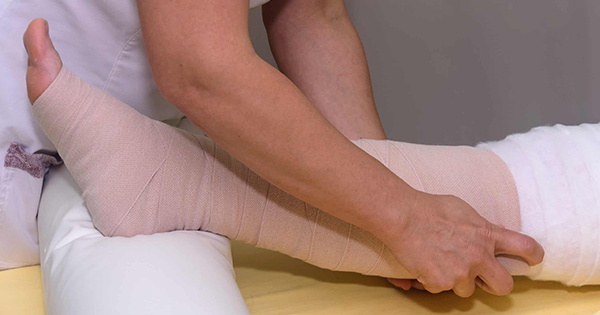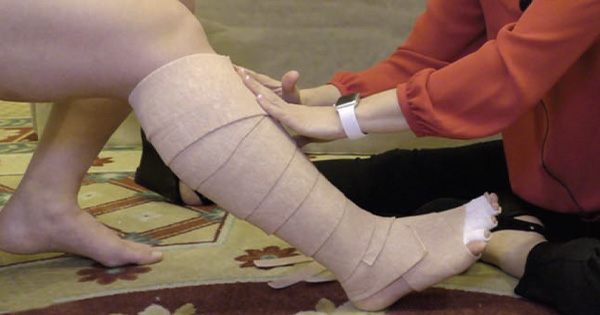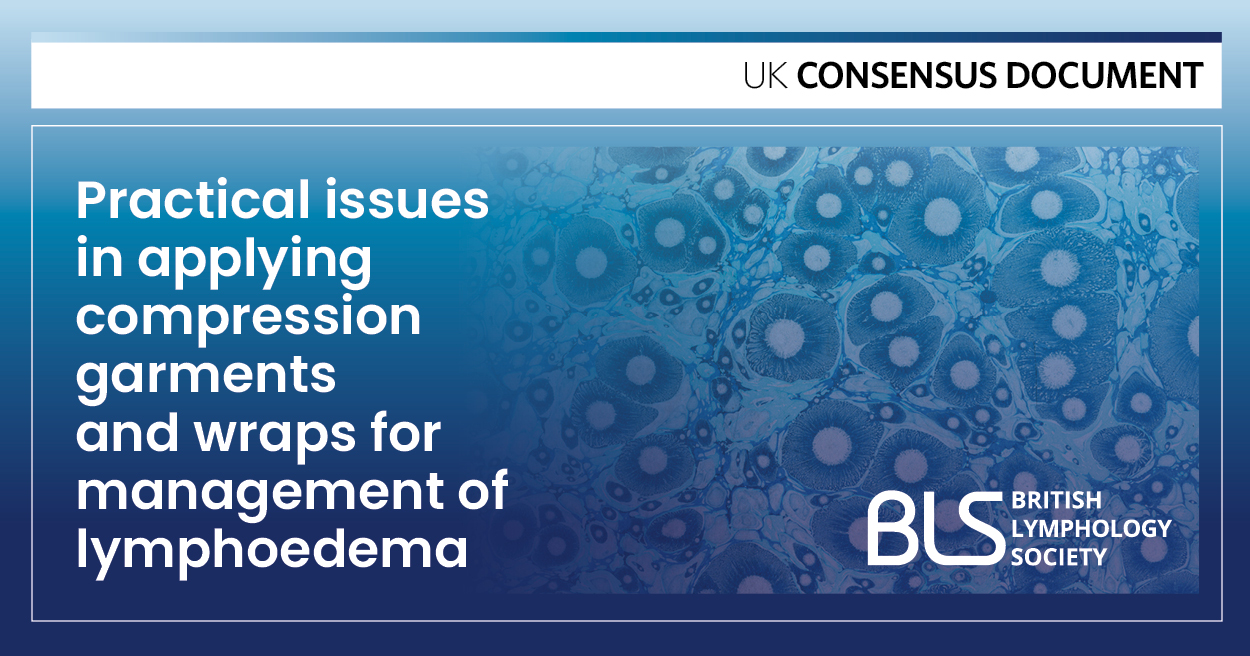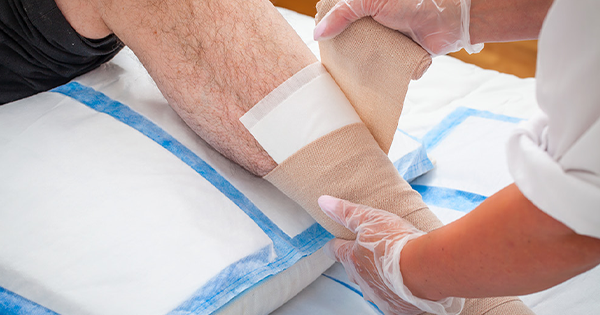Over time, improvements in healthcare have increased the predicted life expectancy of both men and women. Unfortunately, this has brought with it an ageing population that is living longer but not necessarily living ‘healthier’. Kingston et al (2018) estimated that, between 2015 and 2035, there would be an increase in the numbers of people aged over 65 living with four or more long-term concurrent conditions.
These include coronary vascular disease (CVD), chronic obstructive pulmonary disease (COPD), chronic kidney disease (CKD), diabetes, cancer and stroke. Patients are now living with conditions that were previously considered to be life-limiting. However, many experience related issues such as isolation, reduced mobility, or health problems arising from polypharmacy increasing the potential for the development of conditions in the lower limb, venous leg ulceration (VLU), chronic oedema (CO) and obesity. Stafford et al (2018) conclude that the NHS faces a complex challenge, especially in those living in more deprived areas, from developing preventable underlying conditions.
VLUs affect 560,000 people annually within the UK, due to chronic venous insufficiency in the lower limb (All Party Parliamentary Group on Vascular and Venous Disease, 2023). The mainstay of treatment for venous insufficiency includes compression therapy to improve venous function. The growing number of non-healing wounds, plus variations of care highlighted by Guest et al (2020), are causing a significant burden within the NHS and having a significant impact on patients’ quality of life.
CO is the accepted term used to describe oedema that has been present for 3 months or longer (Moffat et al, 2019). This includes lymphoedema, obesity-related oedemas and chronic venous insufficiency. Lipoedema is not included in this term, but is a condition that is under-diagnosed and often confused with CO and obesity.
The difference between CO and lipoedema is the cause of the accumulation of excess fluid within the tissues. With CO and obesity, there is an element of lymphatic failure; whereas lipoedema is due to chronic adipose tissue disorder, with the accumulation of fluid in the tissues occurring as a secondary feature in some patients (Todd, 2010). Földi and Földi (2012) highlight how the venous leg pump function is limited in patients with lipoedema, as the skin offers no resistance.
Prevalence
There is a variation in the perceived numbers of patients with CO, with early studies giving the prevalence as 1.33 per 1000 (Moffat et al, 2003). A more recent study carried out in the East Midlands reported a prevalence of 3.93 per 1000 (Moffatt et al, 2017). It should be noted that 40% of those diagnosed with CO had a concurrent VLU (Moffatt et al, 2016). Lipoedema prevalence data is sparse, with Child et al (2010) estimating 1 in 72,000, to Forner-Cordero et al (2012) stating that, out of 845 patients seen at their clinic, 18.8% received a diagnosis of lipoedema. The Health Survey for England (2019) reported on the problem of obesity in the UK. Confirming that obesity increased with age, those aged 65 to 74 equated to 36% and the over-75s at 26%. The highest numbers of obesity were found in deprived areas, and were more pronounced among women at 36%, as opposed to 22% in more affluent areas.
Management
In the UK, most of the care for patients with VLU is provided by healthcare professionals (HCPs) working in primary care. In the recently published recommendations by the National Wound Care Strategy Programme (NWCSP, 2024), compression therapy is confirmed as the mainstay of managing VLU. Evidence from the report highlights the importance of early intervention, such as applying up to 20 mmHg of compression, followed by a full assessment and ankle brachial pressure index (ABPI) within 2 weeks of presentation.
Following holistic assessment, suitable patients are managed with the optimal level of compression at a minimum of 40mmHg at the ankle. Once healed, the recommendation is that patients should be given compression garments to prevent recurrence (Nelson and Bell-Sayer, 2012). Although initial management might take the form of bandaging, other forms of compression are available and can be prescribed by HCPs with the appropriate prescribing qualification.
Over many years, guidelines have promoted the assessment and management of VLU (CREST, 1998; SIGN, 1998; RCN, 2006). Timmons and Bianchi (2008) discussed the evidence of disease progression, bringing elements of best practice and recommendations to improve patient outcomes and reduce some of the preventable conditions associated with lower limb patients that have not been managed appropriately. Despite this, there is still a theory knowledge gap, and several studies have highlighted issues around skills and knowledge among HCPs (Franks et al, 2016; Weller et al, 2020), which can constitute barriers to healing and prevention.
Barriers to healing and prevention
Weller et al (2020) highlighted in their qualitative study that a number of HCPs found accessing guidelines difficult: many felt they lacked experience and confidence, so instead were influenced by colleagues, whose own knowledge and experience may not have been aligned with recommendations. Lack of time and access to Doppler (ABPI) ultrasonography were also cited as barriers.
Perry et al (2022) cited increasing workload pressure and the lack of onward referral to specialist leg ulcer services, as well as problems with prescribing and types of bandage systems available, plus clinical assessment not being carried out in a timely manner. Skill mix was also seen as an issue, with many patients not seeing a registered team member, or seeing a HCP that had not received adequate training and lacked experience.
The QNI (Queens Nursing Institute, 2019) reported that some teams had caseloads in excess of 400 patients. Additional problems include connectivity and IT infrastructure, and little or no access to administration staff, plus education and training delayed or cancelled due to staff shortages, with only 73% of respondents having a prescribing qualification. However, the biggest issue facing the community in the next 6 years is the probability of 46% of those who responded to the QNI retiring or leaving the profession.
Patients can also influence outcomes, making patient education key: many do not understand the problems, or the solutions, related to their lower limb conditions; patient age and mobility can also prevent the patient from using compression garments post-healing for continued prevention of recurrence and disease progression.
Addressing barriers
As highlighted previously, there are several barriers that have been identified which prevent timely assessment and appropriate management of patients with lower limb conditions. Several of these – such as staffing levels, skill mix, insufficient nurse prescribers and lack of knowledge – cannot be addressed immediately. There are also wider issues that need to be considered that have an impact on service delivery and the cost of treatment, to both the NHS and patients.
The terminology debate regarding patient ‘concordance’, ‘adherence’ and ‘compliance’ has carried on for many years: however, what we really mean is patient engagement. There are many reasons why patients may not engage with HCPs. Annells et al (2008) highlighted ‘the essentialness of a willing patient’. This required trust from the patient, relying on the knowledge that the HCP was aware of the best treatment for them. What was also apparent was the impact that mixed messaging and previous negative experiences had on the willingness of the patient to engage with their treatment. It is possible to link mixed messaging and negative experiences to the HCP lacking knowledge and/or experience. Van Heck et al (2010) also stated that patient trust in the HCP was paramount, to enable the patient to continue with treatment of their VLU.
Apart from providing more education and practical skills to HCPs to help them achieve an improvement in patient outcomes, these issues could also be overcome by involving patients that are able to participate in self-management/joint working with the HCP. The simplifying of treatment/management, improved information for patients, and open discussion with HCPs to set realistic goals may have a significant effect on practice.
In 1986, the Cumberlage Report (DoH, 1986) recommended that nurses working in the community should be able to prescribe items essential to patient care. Following legislation in 1992, a very limited list of items was released for qualified nurse prescribers. With the expansion of the qualification over many years, the list of available items has increased. The full range of compression garments became available to nurse prescribers in 2007 (Hopkins, 2007).
Prior to this, only British Standard was available, so nurses had gained more confidence with these, and many were not aware of the difference between British Standard, AFNOR and RAL. It is safe to say that this persists, with a general nervousness of not wanting to waste money by prescribing the wrong garment. Hopkins (2007) stated that, although companies provide training, this is not always undertaken by HCPs. This could be due to staff shortages and the issues around product availability in their area, as well as the training only covering the skills required to measure and prescribe, rather than wider patient assessment that would ascertain the cause (Hopkins, 2007).
‘Care and Compress’ guide
From the inception of the idea in 2017 to developing a new guide for HCPs working in the community, the authors wanted to produce a ‘living’ document, which would change and improve over time.
It was important the guide provided the best available evidence and matched the current recommendations for the management of lower limb conditions. The authors also wanted to provide information for HCPs in one simple document that included all main lower limb conditions (VLU, CO/lymphoedema, lipoedema and lipolymphoedema), simplifying garment choice by using the levels of compression in mmHg suitable for each stage of the patient’s journey (aligned with garments), instead of the traditional Class 1, 2 or 3. This would also reduce the confusion between Class 1 British Standard 14-17mmHg and Class 1 RAL 18-21mmHg or AFNOR 10-15mmHg. Many HCPs are still unaware that there is a difference in production methods between British Standard and AFNOR/RAL, with the latter providing a firmer-knit garment that is more suitable for the management of CO and lipoedema, whereas British Standard is more suitable for early intervention or conservative management.
The current version of the ‘Care and Compress’ guide [Figure 1], designed with the user in mind, has incorporated all the latest available evidence, including the ‘red flags’ put forward by the NWCSP (2024) document. The pathway starts with immediate care and garment selection; moving on to garment selection once a full assessment has been carried out for a simple VLU, with or without oedema [Figure 2]; and progresses onto the garment selection suitable for the management of VLU, which includes diagrams of the Clinical Etiology Anatomy Pathophysiology (CEAP) classification to assist with diagnosis and garment suitability.
There are further sections to cover CO/lymphoedema, lipoedema/lipalgia and lipolyphoedema. In each lower limb condition section, the clinician is guided through a ‘traffic light’ system and advised on suitable actions. Supporting evidence is highlighted in each section, and references can be found at the back of the document to help the clinician find the rationale for recommendations. Overall, the guide is simple and suitable to be shared with patients, as the diagrams are informative and can demonstrate disease progression.
As with the previous versions of the guide, the current edition has been reviewed by clinicians to ensure that it meets their requirements, and it has been well received [Box 1]. It should be noted that there are two versions of the document: one for Wales, which includes additional red flags, and the main document for the rest of the UK. Both are available electronically or as a printed version from Sigvaris representatives.
Sustainability
Across the world companies are being encouraged to reduce emissions, reduce wastage and to use resources wisely. The NHS has outlined plans to reduce wastage and emissions, set out in the Health and Care Act (2022). Although the ‘Delivering a Net Zero’ report, published in 2022, did not mention wound care, it did highlight the necessity of reducing wastage, improving earlier diagnosis and a reduction of carbon footprint.
Looking at the NWCSP report (2020) it is clear to see that implementing their recommendations has improved healing rates, reduced clinical time and the number of visits, as well as saving costs of medication and dressings. Table 1 signposts to existing guidance in managing oedema and related lower limb conditions.
Although, for some patients, initial management requires compression bandaging, there are a number that could be provided with garments or compression wraps at the onset of their treatment. For many patients, this has immediate benefit, providing independence and a feeling of being involved and having a voice. For HCPs, this can reduce the number of visits required, and address the difficulties of maintaining appropriate levels of compression when levels of knowledge and experience may be mixed within the community workforce.
Conclusion
It is clear from the evidence that, for the foreseeable future, the numbers of patients with complex health needs and lower limb conditions will rise. Coupled with the ongoing reduction in qualified HCPs and lack of experience in the workforce, continued support is required from the private sector to address the most immediate issues and to help both HCPs and patients find ways of improving health outcomes and preventing deterioration in the lower limb. The guidance provided by ‘Care and Compress’ will support HCPs and patients to achieve better outcomes, reduce confusion and avoid unnecessary wastage.







